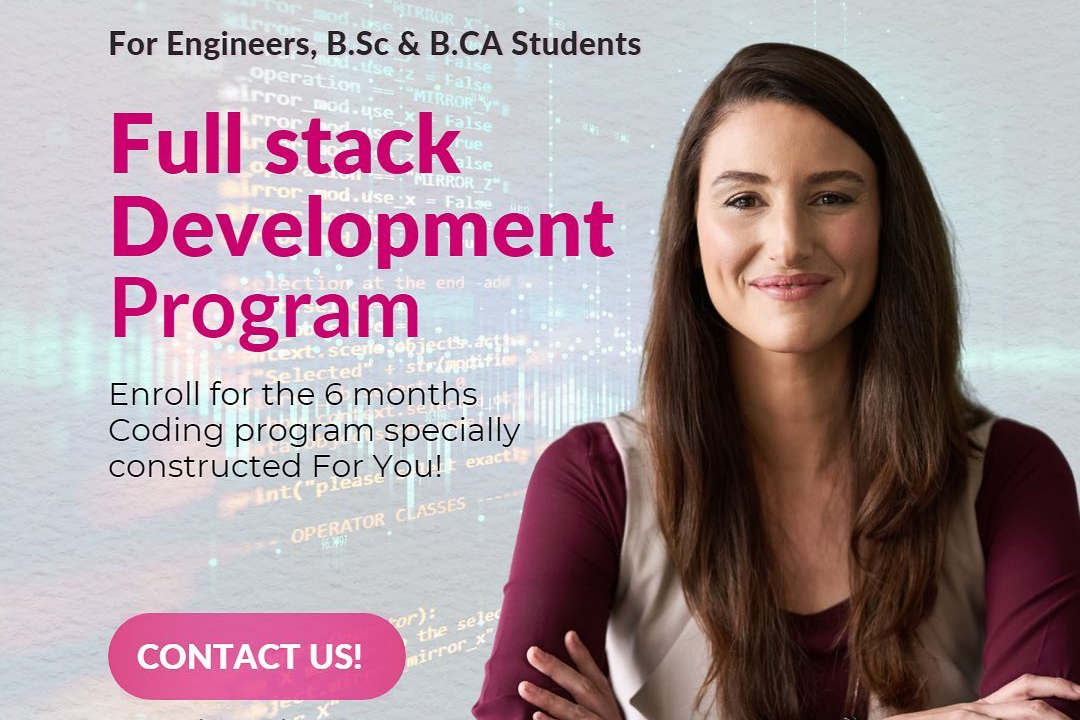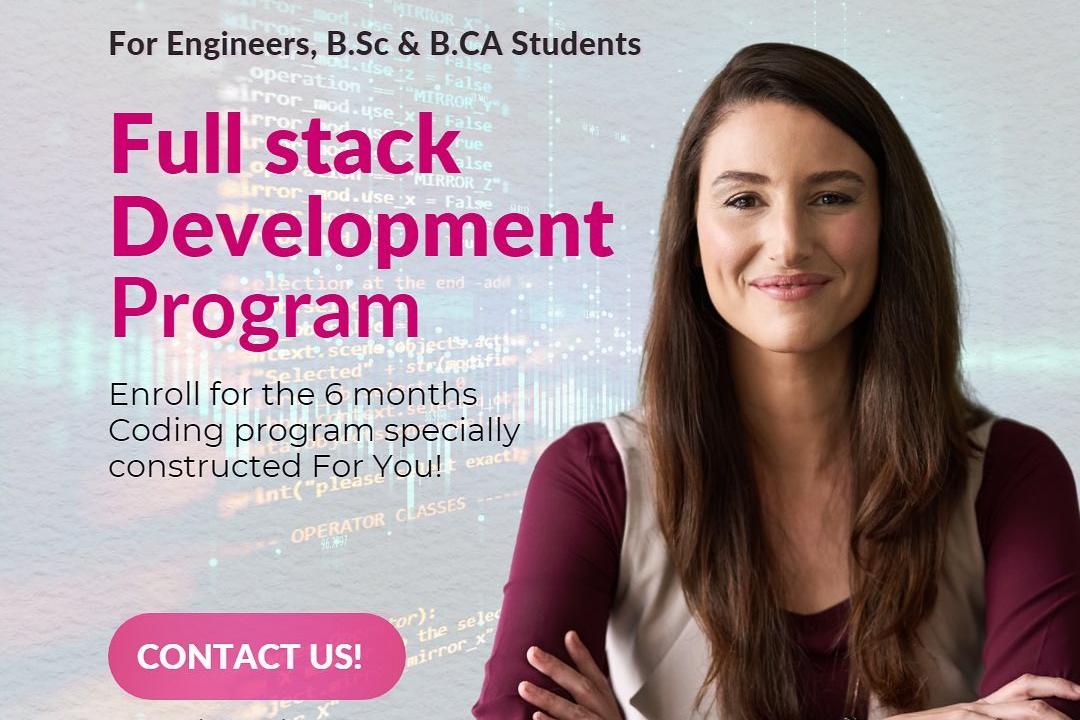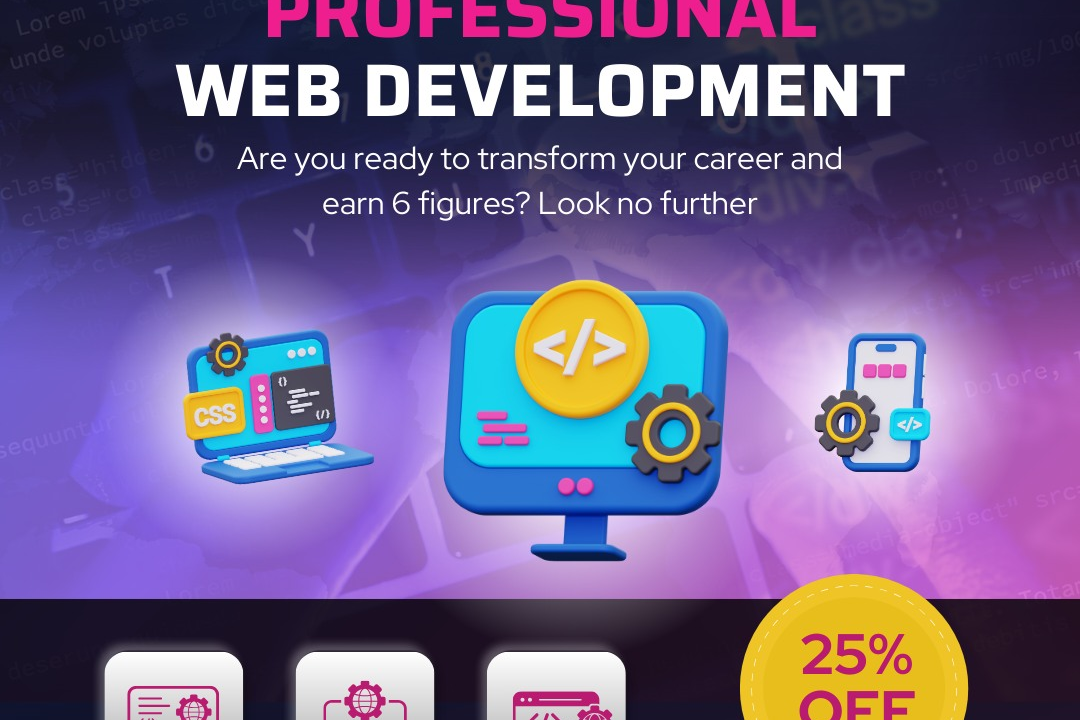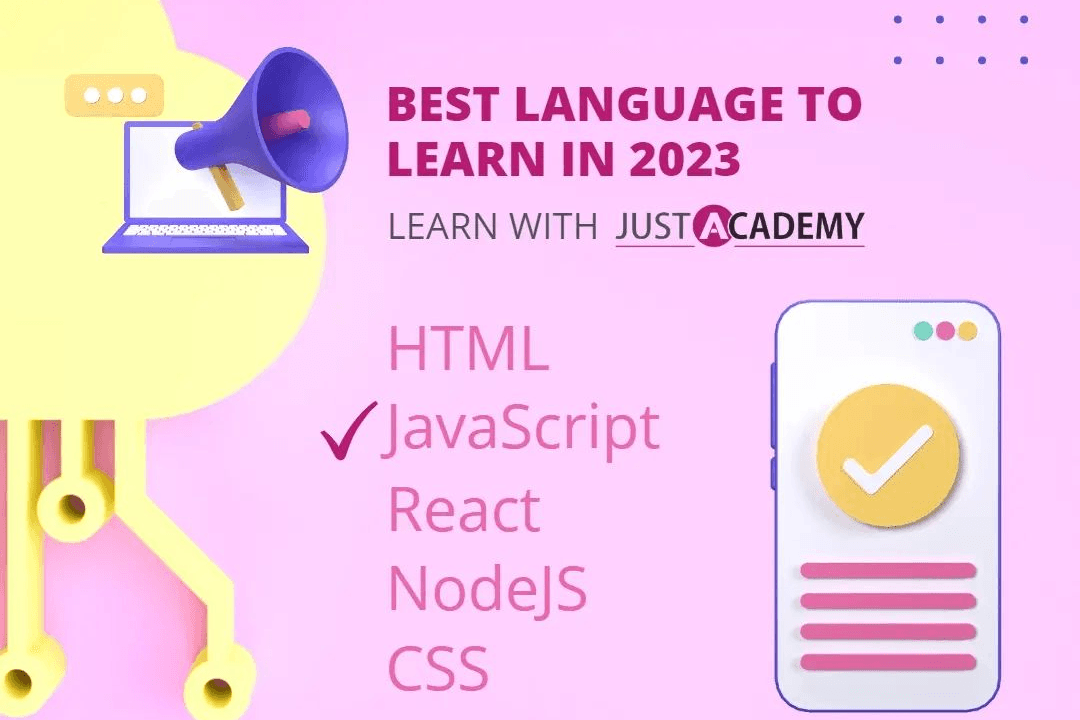Laravel Interview Questions Geeksforgeeks
Essential Laravel Interview Questions to Ace Your Next Interview
Laravel Interview Questions Geeksforgeeks
The Laravel interview questions on platforms like GeeksforGeeks serve as a valuable resource for both aspiring and experienced developers preparing for job interviews. Laravel, a popular PHP framework known for its elegant syntax and robust features, requires candidates to demonstrate a solid understanding of its functionality and best practices. These curated questions cover a range of topics, including routing, middleware, ORM, and application security, helping candidates to assess their knowledge and identify areas for improvement. Additionally, mastering these questions can boost confidence and readiness for technical interviews, making them an essential tool for any Laravel developer aiming to excel in their career.
To Download Our Brochure: https://www.justacademy.co/download-brochure-for-free
Message us for more information: +91 9987184296
Here’s a list of Laravel interview questions along with concise answers:
1 - What is Laravel?
Laravel is a PHP web application framework that provides a robust set of tools and an elegant syntax to create modern web applications. It follows the MVC (Model View Controller) architectural pattern.
2) What are Service Providers in Laravel?
Service Providers are the central place of configuration in the Laravel application. They are responsible for binding components into the service container and registering services.
3) Explain Routing in Laravel.
Routing is a key feature in Laravel that allows developers to create clean and simple URLs. Routes can be defined in the `web.php` file and can include parameters to handle dynamic content.
4) What is Eloquent ORM?
Eloquent ORM is Laravel’s built in Object Relational Mapping tool, allowing developers to interact with the database using an expressive syntax. It provides an active record implementation for working with the database.
5) How can you create a Controller in Laravel?
You can create a controller using the Artisan command line tool by running `php artisan make:controller ControllerName`. This generates a new controller file in the `app/Http/Controllers` directory.
6) What are Middleware in Laravel?
Middleware acts as a filter for HTTP requests entering your application. They can perform actions like authentication, logging, or modifying requests before reaching the controller.
7) How do you perform database migrations in Laravel?
Database migrations are handled using the Artisan command line tool. You can create a migration using `php artisan make:migration migration_name` and run them with `php artisan migrate`.
8) Explain the Blade templating engine.
Blade is Laravel’s lightweight templating engine that allows you to define reusable components and layouts while providing features like template inheritance, control structures, and data binding.
9) What are Laravel Policies?
Policies are classes that organize authorization logic for a given model or resource. They provide a centralized way to manage user permissions and can be created using `php artisan make:policy PolicyName`.
10) What is Dependency Injection in Laravel?
Dependency Injection is a design pattern that promotes loose coupling by injecting dependencies into a class instead of the class creating them itself. Laravel’s service container makes this process seamless.
11 - How can you handle errors and exceptions in Laravel?
Laravel provides an `App\Exceptions\Handler` class where you can customize error handling. You can log errors, render custom error pages, or define responses for specific exceptions.
12) What is CSRF protection in Laravel?
Cross Site Request Forgery (CSRF) protection is enabled by default in Laravel using CSRF tokens, which should be included in forms to ensure that the request originated from the intended user.
13) Explain Laravel's Query Builder.
Laravel's Query Builder simplifies database interactions, allowing developers to build SQL queries using a fluent interface. It is database agnostic and provides methods for selecting, inserting, updating, and deleting records.
14) What are Events and Listeners in Laravel?
Events and Listeners are part of Laravel's event driven architecture. Events are dispatched to signify that a specific action occurred, and listeners respond to those events and handle the associated logic.
15) What is the purpose of the .env file in Laravel?
The .env file contains environment specific configuration settings, such as database credentials and application keys. Laravel uses the values in this file to set up the application environment securely.
These questions can serve as a great way to prepare for a Laravel related job interview, covering fundamental concepts and practical applications in the framework.
Here are additional Laravel interview questions with their answers to expand your understanding of the framework:
16) What is Artisan in Laravel?
Artisan is Laravel's command line interface (CLI) that provides a number of helpful commands for common tasks, such as creating controllers, migrations, and running tests. You can access it by running `php artisan` in your project directory.
17) How can you implement authentication in Laravel?
Laravel provides built in authentication scaffolding that can be set up using the `php artisan make:auth` command. This sets up the necessary routes, views, and controllers for user registration and login.
18) What is the purpose of the `config` directory in Laravel?
The `config` directory contains configuration files for various services and settings used within the application, such as database configurations, cache settings, and more. Each file corresponds to a specific aspect of the application.
19) What is Laravel Mix?
Laravel Mix is a tool for defining Webpack build steps for your application using a fluent API. It simplifies tasks like compiling CSS and JavaScript, optimizing assets, and managing versioning.
20) How do you implement form validation in Laravel?
In Laravel, you can implement form validation by using the `validate` method within your controllers or by creating Form Request classes. The framework provides a straightforward way to define validation rules and error messages.
21 - What are API Resources in Laravel?
API Resources are a way to transform your models into JSON responses for APIs. They provide a clean way to format your output and can be customized to control which attributes of the model are included.
22) Explain the purpose of `route model binding`.
Route model binding allows you to easily inject model instances into your routes based on the ID passed in the URL. Laravel automatically fetches the corresponding model instance for you.
23) What is the `storage` directory used for in Laravel?
The `storage` directory is used to store application files, such as logs, cached files, and file uploads. Laravel encourages separating these files from the public directory for security reasons.
24) What is the difference between `hasOne` and `belongsTo` relationships in Eloquent?
`hasOne` indicates that one model has one related model, while `belongsTo` indicates that a model belongs to another. For example, a User has one Profile (hasOne), and a Profile belongs to a User (belongsTo).
25) How can you utilize Laravel's caching system?
Laravel provides a unified API for various caching systems (e.g., file, database, Redis). You can cache data using methods like `Cache::put()` and retrieve it using `Cache::get()`, enhancing performance by reducing database queries.
26) What are the different types of relationships supported by Eloquent?
Eloquent supports various relationships, including one to one, one to many, many to many, has many through, and polymorphic relationships. Each type allows for different ways to structure the connection between models.
27) How can you send emails in Laravel?
Laravel provides an easy interface for sending emails through its `Mail` facade. You can create mailable classes and use methods like `Mail::to('example@example.com') >send(new YourMailable())` to send emails with custom content.
28) What is Laravel Horizon?
Laravel Horizon is a dashboard and configuration tool for managing Laravel queues. It provides real time insights into job processing, allowing you to monitor queue performance and manage worker instances.
29) What are Laravel Jobs and Queues?
Jobs are tasks that can be queued for asynchronous execution, while queues manage these tasks. Laravel provides a unified API for various queue services like Redis, Beanstalkd, and Amazon SQS.
30) How do you perform testing in Laravel?
Laravel supports testing using PHPUnit. It provides built in capabilities to create feature and unit tests using the `php artisan make:test TestName` command. You can assert various conditions to validate your application’s functionality.
31 - What is the difference between a Request and a Response in Laravel?
A Request in Laravel represents the incoming HTTP request to the application, including parameters, headers, and other data. A Response represents the HTTP response sent back to the client, which can include HTML, JSON, or other formats.
32) How does Laravel handle localization?
Laravel supports localization, allowing you to easily create multilingual applications. You can store translation strings in language files located in the `resources/lang` directory and leverage the `trans()` function to retrieve them based on the application's locale.
33) What is the role of `.env.example` file?
The `.env.example` file serves as a template for the `.env` file. It contains default configuration values and helps developers understand what configurations are required to run the application.
34) Explain the difference between `GET` and `POST` requests in Laravel.
`GET` requests retrieve data from the server and can be cached, while `POST` requests submit data to the server and are typically used for actions that change the server state, such as creating or updating resources.
35) How can you organize your Laravel application for better maintainability?
You can organize your Laravel application by adhering to best practices, such as following the MVC pattern, creating modular components, using service providers, grouping routes, and employing repository patterns to manage data access.
These additional points provide a broader understanding of Laravel's features and functionalities, equipping you well for any interview scenario.
Course Overview
The “Laravel Interview Questions - GeeksforGeeks” course is designed to equip participants with essential knowledge and practical insights into Laravel, a popular PHP framework. This comprehensive program covers a wide range of interview questions and answers, focusing on key concepts, features, and best practices associated with Laravel development. Participants will engage with real-world scenarios and projects, enhancing their understanding of topics such as routing, middleware, Eloquent ORM, and application structure. By the end of the course, learners will be well-prepared to confidently tackle technical interviews and demonstrate their expertise in Laravel, boosting their career prospects in web development.
Course Description
The “Laravel Interview Questions - GeeksforGeeks” course offers a thorough exploration of Laravel, one of the leading PHP frameworks used in web development. Tailored for aspiring developers and seasoned professionals alike, the course dives into a curated collection of common interview questions and comprehensive answers that cover crucial topics such as routing, middleware, controllers, Eloquent ORM, and security practices. Participants will benefit from real-time projects that reinforce learning through practical application, enabling them to build a solid foundation in Laravel and gain the confidence needed to excel in job interviews. Completing this course will enhance your understanding of Laravel, making you a competitive candidate in the ever-evolving tech landscape.
Key Features
1 - Comprehensive Tool Coverage: Provides hands-on training with a range of industry-standard testing tools, including Selenium, JIRA, LoadRunner, and TestRail.
2) Practical Exercises: Features real-world exercises and case studies to apply tools in various testing scenarios.
3) Interactive Learning: Includes interactive sessions with industry experts for personalized feedback and guidance.
4) Detailed Tutorials: Offers extensive tutorials and documentation on tool functionalities and best practices.
5) Advanced Techniques: Covers both fundamental and advanced techniques for using testing tools effectively.
6) Data Visualization: Integrates tools for visualizing test metrics and results, enhancing data interpretation and decision-making.
7) Tool Integration: Teaches how to integrate testing tools into the software development lifecycle for streamlined workflows.
8) Project-Based Learning: Focuses on project-based learning to build practical skills and create a portfolio of completed tasks.
9) Career Support: Provides resources and support for applying learned skills to real-world job scenarios, including resume building and interview preparation.
10) Up-to-Date Content: Ensures that course materials reflect the latest industry standards and tool updates.
Benefits of taking our course
Functional Tools
1 - Laravel Framework
The core of this training program revolves around the Laravel framework itself, a powerful PHP web application framework renowned for its elegance and simplicity. Laravel provides an expressive and modern syntax that allows developers to create robust web applications efficiently. As part of the training, students will explore various components of Laravel, including routing, middleware, and security features, while working on real time projects that solidify their understanding of its capabilities.
2) PHP Development Environment
To effectively develop applications using Laravel, students need a suitable development environment set up. This includes tools such as PHP, Composer, and a local server environment like XAMPP or MAMP. The program guides participants through the installation and configuration of these essential tools, ensuring they have a solid foundation to start building Laravel applications. Understanding the ecosystem that Laravel operates in is crucial for seamless project development.
3) Database Management Systems
In conjunction with Laravel, students will utilize various database management systems, chiefly MySQL. The course covers how to interact with databases, perform migrations, and use Eloquent ORM (Object Relational Mapping) for database manipulation. By learning to link their applications with databases effectively, participants gain the skills necessary for data storage and retrieval, which is fundamental in modern web development.
4) Version Control with Git
The importance of version control cannot be overstated in software development. The training program incorporates Git, a widely used version control system, to help students manage their code efficiently. Learners will understand how to create repositories, commit changes, and collaborate on projects using Git. This skill is essential for working in teams and ensuring that code is tracked and managed properly throughout the development lifecycle.
5) Integrated Development Environment (IDE)
Using an Integrated Development Environment (IDE) greatly enhances productivity during the development process. The course encourages the use of popular editors such as Visual Studio Code or PHPStorm, providing students with insights into how to utilize features such as debugging, code highlighting, and version control integration. These tools streamline coding workflows and help students write better quality code with efficiency.
6) Testing and Debugging Tools
Testing is a critical aspect of software development, and this course emphasizes the importance of robust testing techniques. Students will learn about testing frameworks like PHPUnit that Laravel supports, ensuring their applications are reliable and maintainable. The program also covers debugging tools to identify and resolve issues quickly, equipping participants with the skills to produce error free applications before deployment.
7) RESTful API Development
Understanding RESTful APIs is crucial in modern web applications. This training program covers the creation and consumption of RESTful APIs using Laravel. Students will learn how to build APIs that can serve data to front end applications, such as mobile apps or JavaScript frameworks, enabling seamless communication between the server and clients. Through practical projects, participants will implement authentication, data validation, and resource management, ensuring they are proficient in API development.
8) Frontend Integration
While focusing on back end development with Laravel, the training also delves into frontend integration. Students will gain insight into how to connect their Laravel applications with popular front end frameworks like Vue.js or React. This section emphasizes the importance of creating cohesive user experiences by effectively communicating between the back and front end, ensuring that data flows smoothly and is displayed properly to end users.
9) Authentication and Authorization
Securing web applications is paramount in today’s digital landscape. The course covers Laravel's built in authentication and authorization features, enabling students to implement user registration, login systems, and role based access controls. Participants will work on projects that involve securing routes and managing user permissions, equipping them with the knowledge to protect sensitive data and ensure application integrity.
10) Deployment and Hosting
Once the application is developed, the course guides students through deployment scenarios. Participants will learn about various hosting options, such as shared hosting, VPS, and cloud services like AWS or DigitalOcean. The program includes practical exercises on deploying Laravel applications live, configuring environments, and managing server settings to ensure optimal performance post launch.
11 - Performance Optimization
As applications grow, performance optimization becomes essential. The training includes techniques for optimizing Laravel applications, such as query optimization, caching strategies, and code refactoring. Students will work on projects focused on measuring and improving application speed, ensuring users have a seamless experience and minimizing server load.
12) Using Laravel Packages
Laravel’s ecosystem is enriched by numerous community built packages that enhance functionality. This section of the program introduces students to popular Laravel packages like Spatie for role management, Laravel Passport for API authentication, and more. Participants will learn how to integrate these packages into their projects effectively, harnessing the power of community resources to accelerate development.
13) Deployment of Real Time Projects
The culmination of the JustAcademy Laravel training program is the development and deployment of real time projects. Students will be tasked with building comprehensive web applications that integrate all the skills they’ve acquired throughout the training. These projects will not only showcase their proficiency in Laravel but also provide them with a portfolio piece that demonstrates their capability to potential employers.
14) Continuous Learning and Community Support
The technology landscape is always evolving, and continuous learning is vital for a successful career in software development. The course discusses the importance of engaging with the Laravel community through forums, conferences, and social media. Students will be encouraged to participate in open source projects and stay up to date with the latest Laravel innovations, ensuring they remain competitive in the job market.
15) Certificate of Completion
Upon successful completion of the course, students will receive a certification from JustAcademy. This certificate validates their skills in Laravel development and demonstrates their commitment to professional growth. Graduates will be well prepared to pursue careers in web development, armed with valuable knowledge and hands on experience to navigate the job market confidently.
Browse our course links : https://www.justacademy.co/all-courses
To Join our FREE DEMO Session:
This information is sourced from JustAcademy
Contact Info:
Roshan Chaturvedi
Message us on Whatsapp:
Email id: info@justacademy.co












